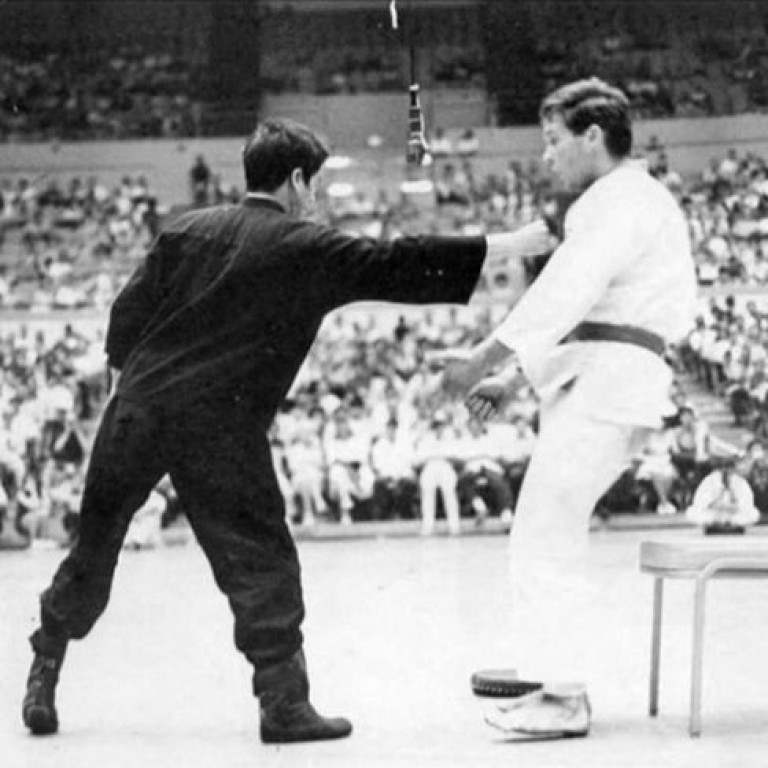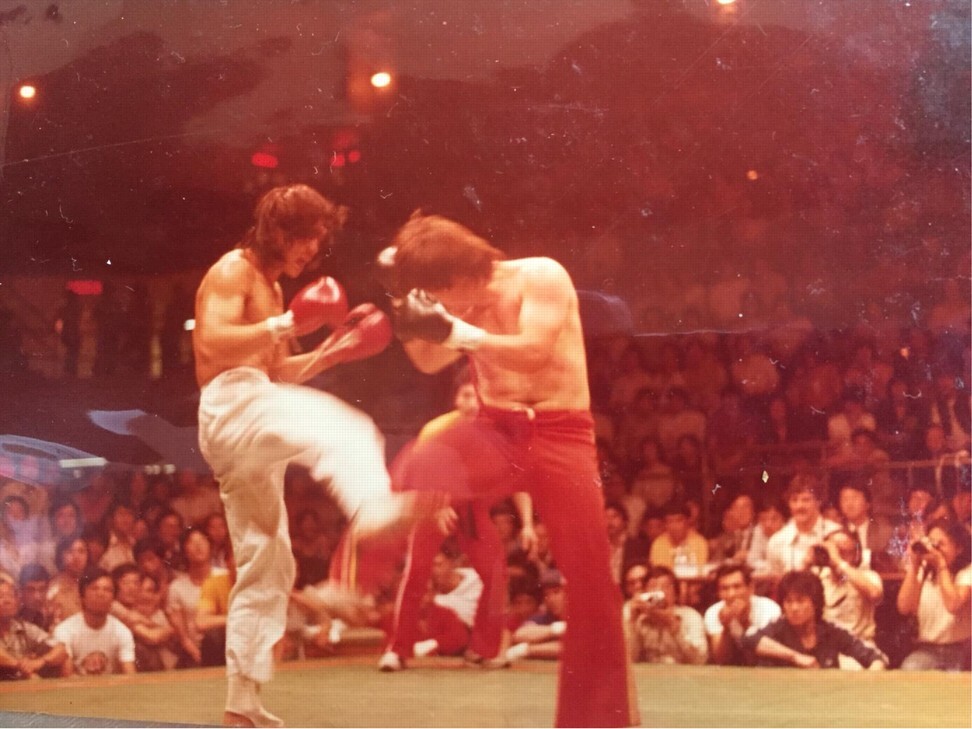
ESPN’s 30 for 30 ‘Be Water’ revisits the day Bruce Lee changed martial arts forever
- Bruce Lee’s legendary exhibition at the Long Beach International Karate Championships in 1964 began the martial arts movement that is still developing today
- ‘We walked away thinking he was changing things up,’ says legendary Ron Van Clief, who went on to become one of the UFC’s first commissioners
Bruce Lee altered the course of martial arts history when he walked out on to the auditorium floor at the inaugural Long Beach International Karate Championships on August 2, 1964.
It would take the best part of a decade for Lee’s vision to seriously go global but those in the crowd that day knew they’d seen something very special.
Ron Van Clief was there in California among them.
“He was a maverick,” Van Clief said. “All the great fighters were there and it was a spectacular event. You know it really changed martial arts. It started the martial arts movement that you can see still developing today.”
ESPN’s debut of the Bao Nguyen-directed documentary Be Water on Sunday was set to take in Lee’s struggle for recognition – and work – in the United States in the early 1960s. At that time Lee was formulating his own style, eventually known as jeet kune do, but he’d only really just started to share his vision with select students.
Long Beach changed everything.
Bruce Lee returns to spotlight in ESPN’s ‘Be Water’ documentary
The event – the first of its kind – gathered martial arts champions from around the world, and also film producers, actors and stuntmen from nearby Hollywood as they looked for ideas for their action movies – and for potential talent to work in them.
Lee would not long after be courted by television producers, and two years later was hired for the series The Green Hornet. His role as the sidekick Kato started to alert Hollywood to the talents of the former Hong Kong child star.
Lee’s training methods would soon be embraced by the likes of Hollywood A-listers Steve McQueen and James Coburn. But they also opened up the eyes of athletes in terms of what might be possible with martial arts, particularly when fighters cross codes and started mixing up what they had learned.
“I thought what he showed the world that day was practical and tactical. He was non-classical,” said Van Clief, who would go on to be one of the UFC’s first commissioners in the early 1990s, and would fight on the UFC 4 card in 1994 – aged 51.
“Everybody had heard about him, and everybody wanted to see him. We walked away thinking he was changing things up.”
Lee was 23 years old at the time he took the drive to Long Beach from his Oakland home. In front of some of the best martial artists on the planet, and more than a few curious onlookers from Hollywood, he ran through a series of exercises – staged performances, really – to showcase what he was all about, from the style of martial arts he was developing, to his train of philosophical thought.
There were the two-fingered push-ups, and the one-inch punch, and a general aura that Lee brought with him that no one in the United States had encountered before.
Van Clief, a lifetime martial artist, had started to hear about Lee. How this kid had been born in San Francisco but raised in Hong Kong. How he’d come under the tutelage of the wing chun master Ip Man but he’d been sent back to the US by his family for his own safety after running with gangs on the streets of Kowloon.
“I was already interested in wing chun and knowing that he had experienced Ip Man and his legacy, I knew I had to go and find him,” Van Clief said. “I think any founder of any style is a maverick and Lee helped show the world that there are no original styles, they are all hybrids.”

Van Clief, now 77 years old, would form a lifelong friendship with Lee that helped draw the American to Hong Kong. And he was with the “Little Dragon” for dim sum just a few days before the star was taken by a cerebral oedema on July 20, 1973, aged 32.
“Bruce was just a very nice man, a very pleasant man,” said Van Clief, who would eventually be known as “The Black Dragon” and would carve himself a film career in “Bruceploitation” films such as Way of the Black Dragon (1979), and Fist of Fear, Touch of Death (1980).
“A lot of people looked at him as arrogant but I looked at the whole dynamic as just him being confident. If you train properly, you should train that way. A lot of karate guys hated him and thought that he thought karate was inferior. There was a lot of kung fu versus karate things happening in the ’60s and ’70s. Look at what he was doing and look at where we are with MMA today.”
Also in Long Beach on that day in 1964 was the 12-year-old Benny Urquidez, a good decade before he became known as “The Jet”, and one of the most accomplished martial artists in history.
Urquidez’s fixation with Lee and his teachings would lead him, like Van Clief, to cross over into Hong Kong cinema and, again like Van Clief, would see him head out East to fight professionally. It would also take the American to 12 world titles as he studied and mastered judo, karate, full contact karate, and kick-boxing.
“Everybody does the physical but to me the physical is only 20 per cent,” Urquidez said. “The mental part is 80 per cent. The internal power is more important than the external. Bruce Lee did [that]. In 64 he came to the Internationals and he was talking about internal power.”
Lee was also showing how it would be put to use.
“Bruce Lee had this guy in front of him, about 245 pounds, six-foot-three,” Urquidez recalled. “He puts a chair behind him and boom. The one-inch punch. This guy goes flying and I jump up and I say ‘I want to do that!’
“That was the first time I’d seen Bruce. I asked my brother if I could spar with Bruce but I didn’t have enough experience. So Bruce was my inspiration and I went on to fight for every belt that I could. He gave me the inspiration to go out there and really prove myself. I went on to take every title there was.”

The now 67-year-old Urquidez would also star alongside Hong Kong martial arts hero Jackie Chan, and feature in what remains arguably the most impressive fight scene staged for the silver screen, alongside Chan in the Sammo Hung Kam-bo-directed Wheels on Meals (1984).
“You know when I came out and I worked with Jackie and with Sammo Hung, I found all these great fighters had a Hong Kong style of fighting but they have their own way of presenting it,” he said.
“You look at all these fighters today and they take what they learn and develop their own unique style. That’s what I was doing as far back as the ’70s and Bruce Lee was telling us that was the future way back in the 1960s.”

